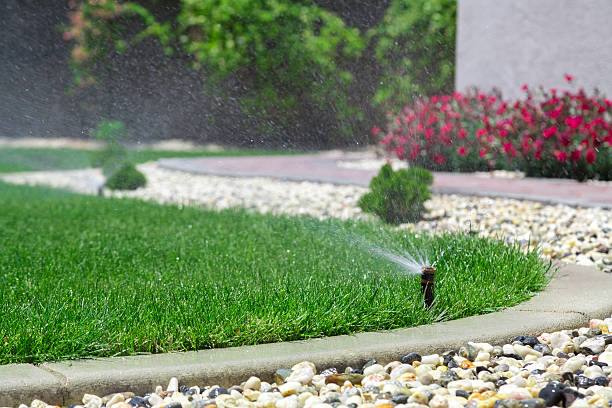Installing a lawn can be a daunting task. There are so many factors to consider: the climate, the type of soil, and the amount of water available. And if you live in an area that is currently experiencing drought or water restrictions, it can be even more challenging to find a lawn that will thrive. Let’s explore some of the best ways you can get a lawn installation near you that is both beautiful and drought tolerant.
The Practicality of Natural Grass
Amid all of the talk of water restrictions and drought, you may be wondering if natural grass is still a practical choice for your lawn. The answer is: it depends. If you live in an area with high temperatures and little rainfall, natural grass is likely to suffer. However, if you live in a cooler climate with regular rainfall, natural grass can still be a viable option. The key is to select a grass species that is adapted to your climate and soil type.
Natural grass can always be managed as long as you have proper lawn maintenance. For example, if you live in an area with high temperatures and little rainfall, you may need to water your lawn more frequently than usual (but not too heavily). You can also consider installing a drip irrigation system, which will help to conserve water.
Dismantling the Myth: Healthy Lawns Require Heavy Watering
One of the biggest myths about lawn care is that healthy lawns require heavy watering. This simply isn’t true. In fact, overwatering is one of the biggest problems that homeowners face when trying to maintain a healthy lawn. Overwatering can lead to a number of problems, including:
– fungal diseases
– compaction
– thatch build-up
– shallow root systems
– weed growth
So how much water does your lawn really need? It depends on the type of grass, the climate, and the time of year. For most lawns, one inch of water per week is sufficient. If you live in a hot, dry climate, you may need to water more frequently. The best way to determine how much water your lawn needs is to check the soil moisture levels.
Letting the Lawn Go Brown as a Strategy for Drought Management
If you live in an area that is experiencing drought conditions, you may be thinking about letting your lawn go brown. This is actually a viable option for many homeowners. Browning or dormant grass is perfectly normal during periods of drought stress.
And while it may not be the prettiest sight in the interim, it is much better than having a dead lawn. This is a good temporary state before you work on making it healthy again when water management is less restrictive.
There are a few things to keep in mind if you decide to let your lawn go brown:
– Don’t wait until the grass is completely dead before taking action. The sooner you take steps to protect your lawn, the better.
– Be sure to mow your lawn before it goes dormant. This will help to prevent thatch build-up and improve the overall health of the lawn.
– Don’t fertilize your lawn during periods of drought stress. This will only add to the problem.
Installing a New Lawn? Start Smart with Drought Tolerant Grasses
If you’re installing a new lawn, there are a few things you can do to promote water-wise practices. First, choose a grass species that is native to your area or that is known to be drought tolerant. Some good options include:
– Buffalo grass
– Blue grama grass
– Zoysia grass
– Fine fescue
The difference between these species and traditional lawn grasses is that they are more drought tolerant and require less water to stay healthy.
Another way to promote water-wise practices is to use organic matter in your soil. This will help to improve the overall health of your lawn and increase its ability to retain moisture. compost, manure, and peat moss are all good options.
You should also consider installing a drip irrigation system. This will help you to water your lawn more efficiently and reduce the amount of water wasted.
Best Practices for Promoting a Water-Wise Lawn
There are a few simple things you can do to promote water conservation in your lawn care routine:
– Water early in the morning or late at night to reduce evaporation.
– Use a mulching mower to return grass clippings back to the lawn. This will help to retain moisture and reduce the need for watering.
– Aerate your lawn regularly to improve drainage and reduce waterlogging.
– Test your soil regularly to ensure that it is getting the nutrients it needs. This will help to reduce the need for fertilizers, which can run off and pollute waterways.
By following these simple tips, you can help to keep your lawn healthy despite drought conditions. And when the rain does come, your lawn will be ready to green up and thrive.
One of the best things you can do is to get a lawn installation from a professional landscaping company that specializes in lawn installation in your local area. This will help to ensure that your lawn is installed correctly and that it is able to withstand the rigors of the climate. A professional landscaping company will also be able to advise you on the best type of grass for your area and how to care for it properly.
Ready for Your Lawn Installation? Get in Touch with Dracut Landscaping for Your Residential Landscaping Services!
If you’re interested in having a new lawn installed, or if you need help with lawn care and landscaping, contact Dracut Landscaping. We specialize in residential landscaping services and can help you to create a beautiful, water-wise lawn that will be the envy of your neighborhood.Contact us today to get a quote for your lawn installation!


